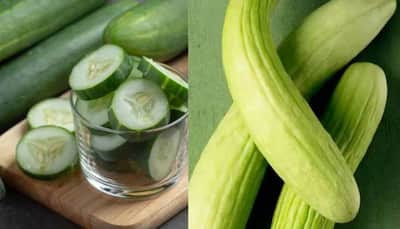As summer temperatures soar, staying hydrated and cool becomes a top health priority. In India, two popular cooling vegetables — Kheera and Kakdi — dominate the markets and our diets during this season. Both are refreshing, water-rich, and low in calories, but which one is better suited for summer? Let’s explore the differences, health benefits, and nutritional profiles of kheera and kakdi.
Typically refers to the common green cucumber (Cucumis sativus). It’s smooth, firm, and found throughout the year. Eaten raw, in salads, or infused in water, kheera is known for its high water content.
Although similar to cucumber, kakdi is lighter in color (pale green to white), longer, and has ridges on the skin. It’s more commonly available in North India during the summer months.
: With about 95% water, kheera helps replenish body fluids lost through sweat.
The fiber helps regulate bowel movements and soothes the stomach.
Rich in antioxidants and vitamin C, kheera supports clear, hydrated skin.
Low in calories, kheera can be a great snack to beat hunger in hot weather.
Acts as a mild diuretic, helping flush toxins from the body.
: Slightly more water content than kheera makes kakdi ultra-refreshing.
More fiber supports digestion and satiety.
In Ayurveda, kakdi is considered highly cooling and is recommended to reduce “pitta” (heat) during summer.
Contains more potassium and vitamin C, supporting electrolyte balance and immunity.
: Kakdi juice is often used in traditional skincare remedies.
Kakdi has a slight edge over kheera for summer, especially due to its superior cooling effect, higher fiber, and vitamin content. However, kheera remains an excellent and more accessible option, especially if kakdi is not available in your region.
Stay informed on all the , real-time updates, and follow all the important headlines in and on Zee News.








